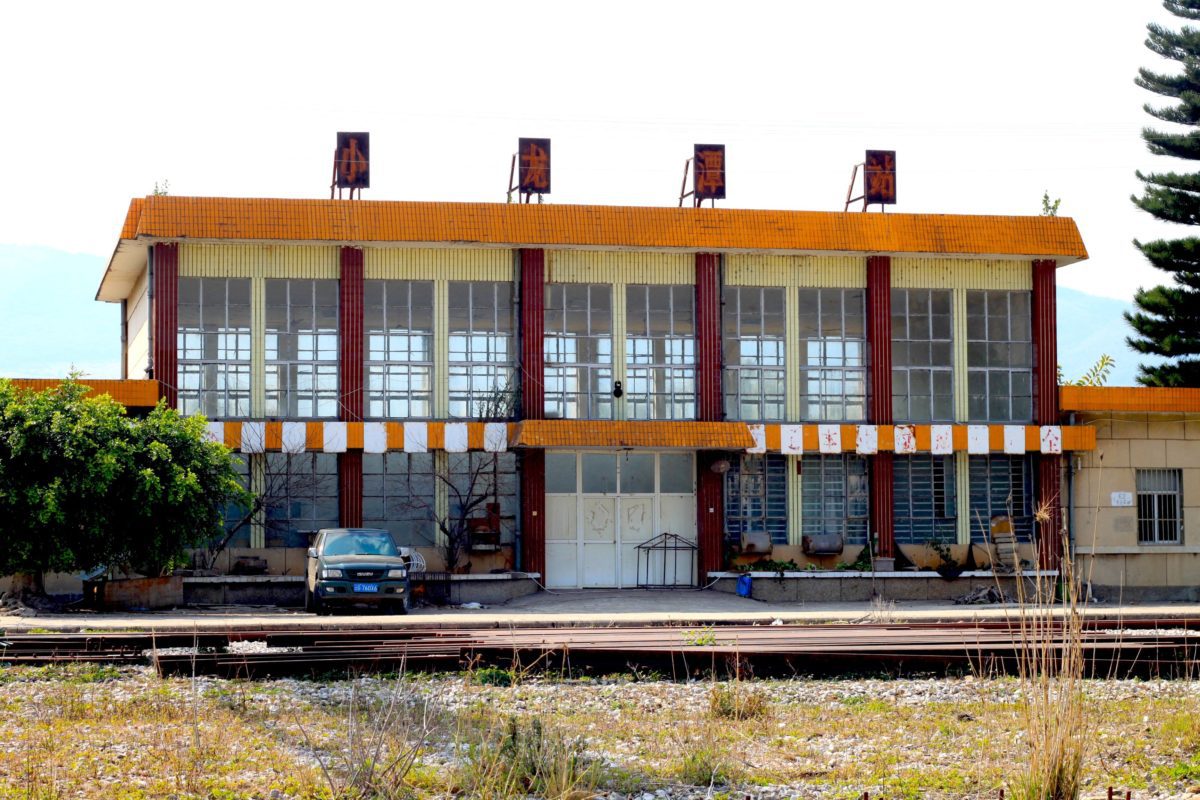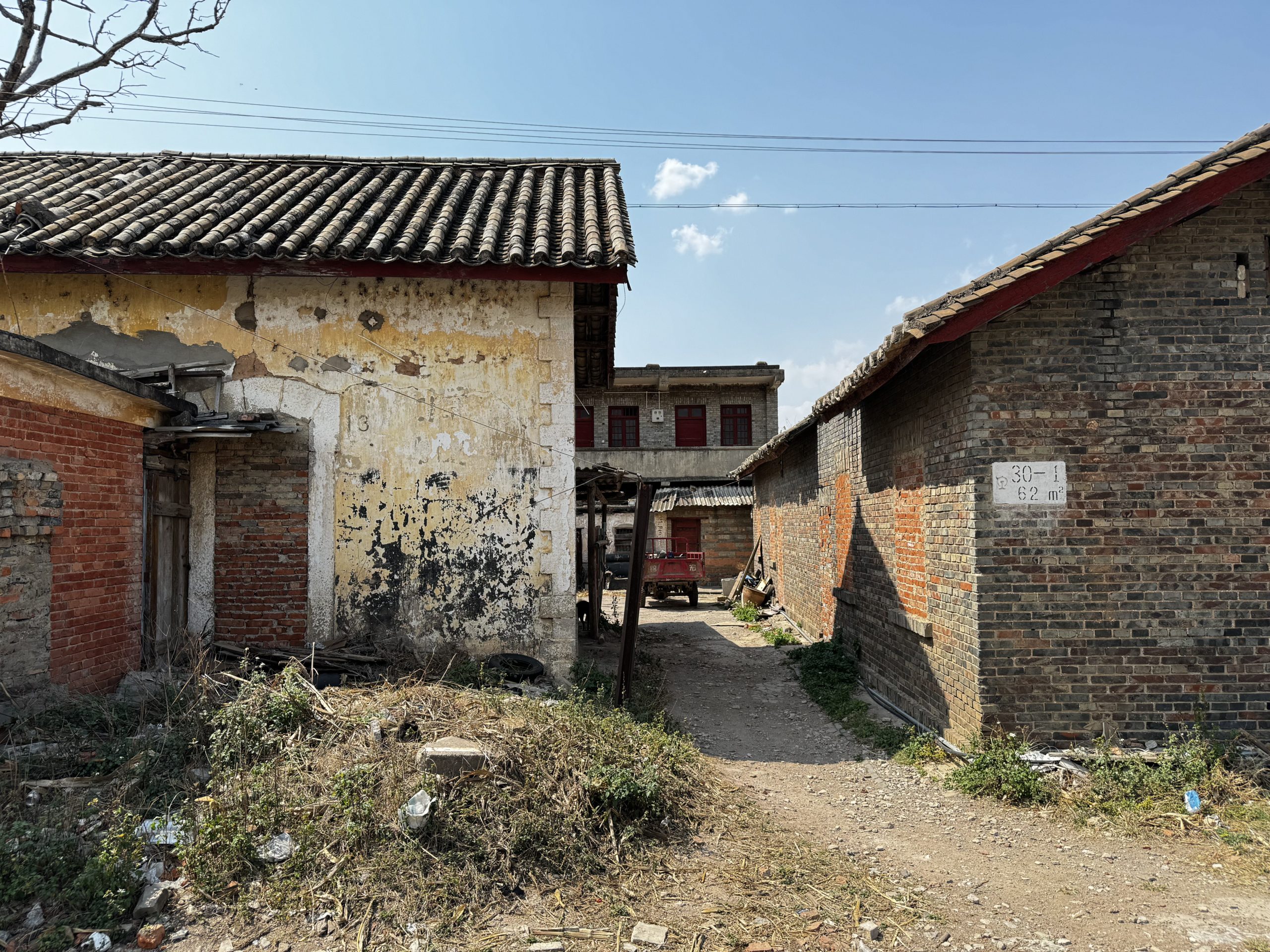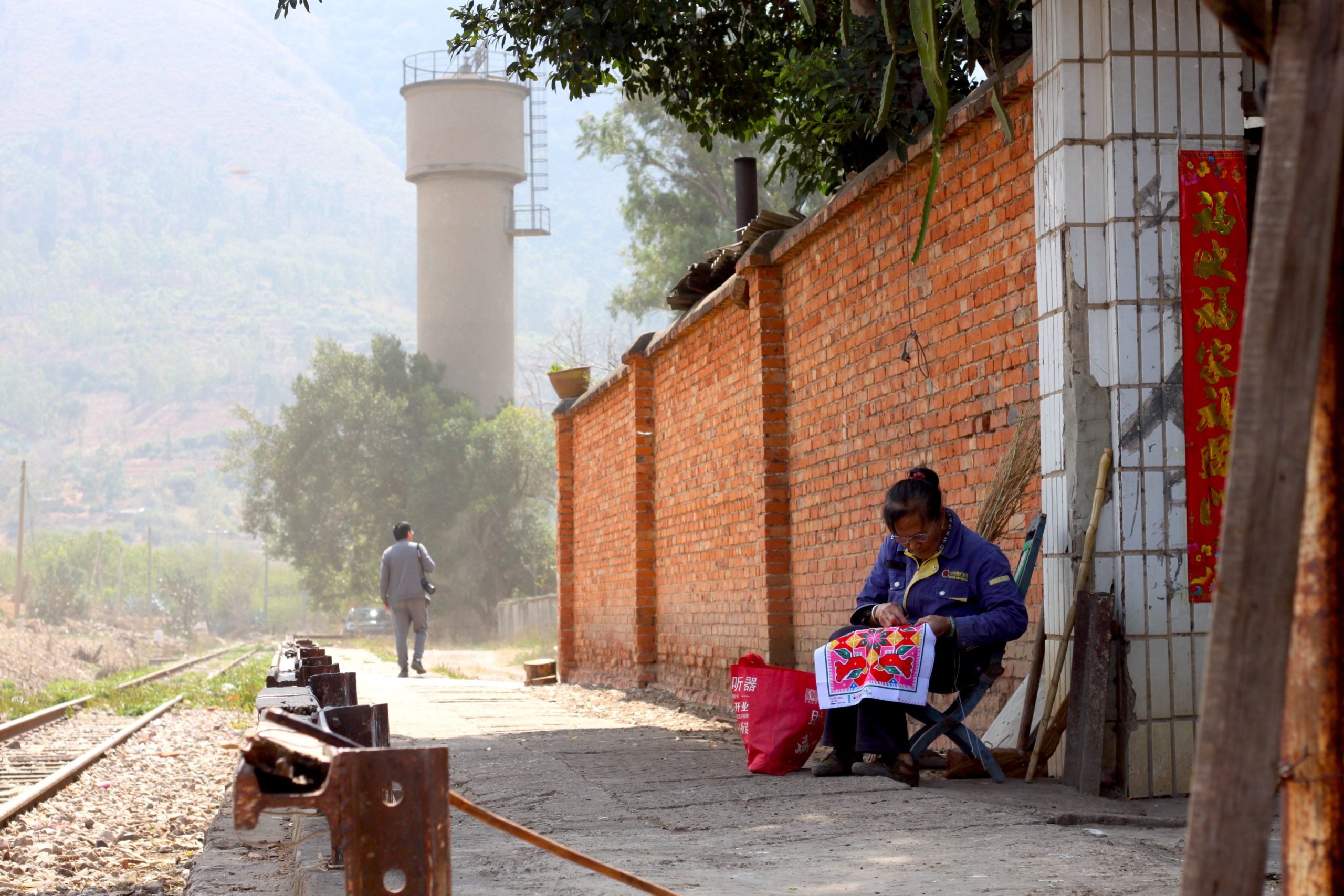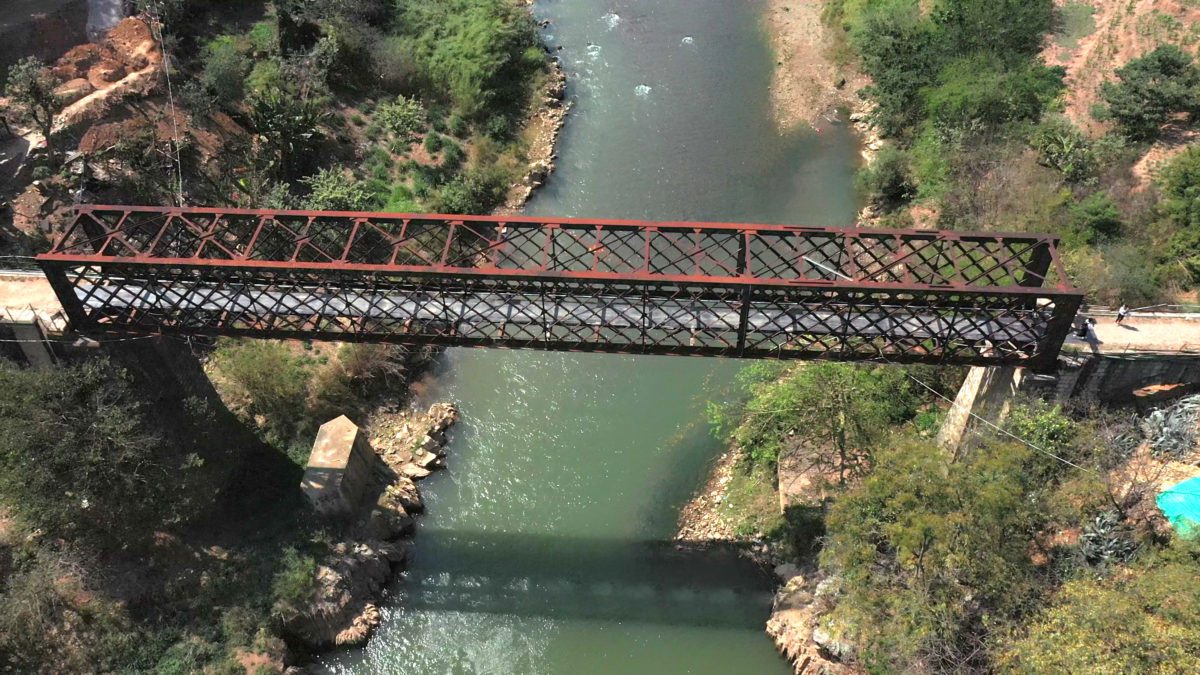
Yunnan-Vietnam Railway’s Lesser-Known Train Stations: Reconstructing Bridge History
Hidden amidst the rugged outskirts of Kaiyuan (开远), an industrial city in Yunnan’s Honghe Prefecture, lies a forgotten train station that once played an important supply stop along the historical Yunnan-Vietnam Railway. Behind the rumblings of massive coal trucks roaring up dustry roads, while transporting loads of coal from the gigantic coal pit nearby, resides Xiaolongtan (小龙潭村), a small village known today for its endless amounts of coal deposits.
After navigating around the gigantic coal pit and abandoned factories, we finally arrive at a weathered-down white sign post with the barely readable Chinese characters for “Xiaolongtan Village.” Upon confirming our route on Baidu Maps, we drive ahead as an orange-roofed train station slowly creeps above the untamed weeds. Metal cranes and rusty rail tracks still lay scattered throughout the deserted train station. This was once the “New Xiaolongtan Train Station.” The boxy building, is reflective of a Chinese architectural style from the 70’s and 80’s. Primarily used as a coal transport stop, the grey crumbling factory nearby with long, narrow chutes showcases how coal was once transported onto trains that ran across the Yunnan-Vietnam Railway. I snap some shots and hop back into our car to further explore the quiet and mysterious terrain ahead.
Remnants of the Yunnan-Vietnam Railway
Further up, past the “newer” train station lie the remnants of the original train station and its surrounding buildings, most of which were originally designed by the French. Though few of the mustard-yellow French buildings still remain, we take a short trek to soak up the area’s history and chat with a few of the remaining locals. Most of the remaining residents are retired folk who live a simple lifestyle. They happily share interesting stories and the village’s fascinating history with us. We stay for an hour, drinking some fresh tea while also learning about their homes, some of which are the original French buildings. Watching our time, we decide to continue moving on.
“Keep driving up. There’ll be an opening among the trees and cement pipes along the edge of the dirt path up ahead. Park there and follow the path,” they say as they wave us off and get back to their daily routines.
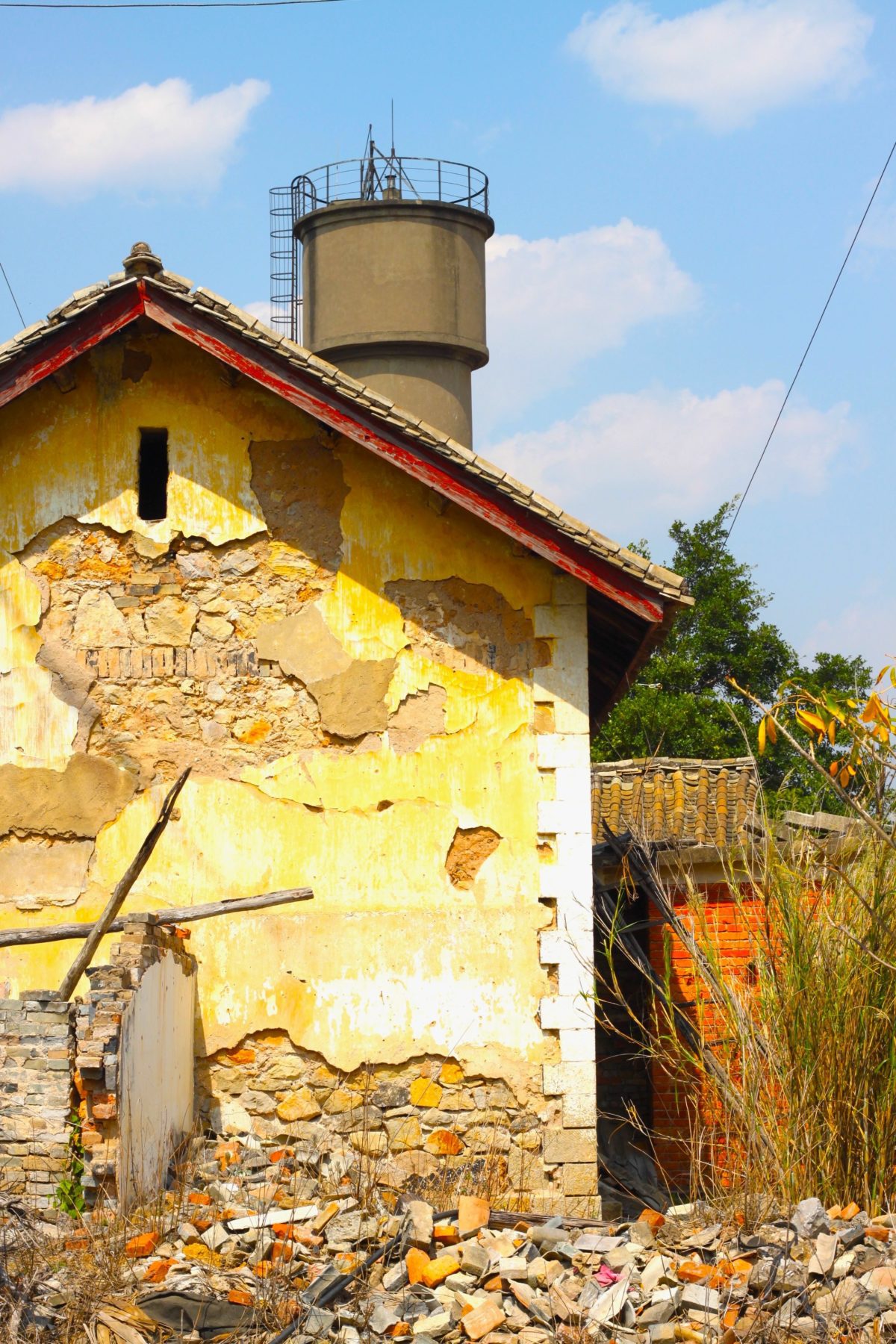
History Behind Xiaolongtan’s Two Bridges
Not even ten minutes later, the villagers’ description appears before us as we park on the side of the road. Following the original Yunnan-Vietnam Railway’s tracks, we eventually come across a small farming community, mostly inhabited by Miao minority villagers living harmoniously in small wooden shacks and boxy concrete buildings. In the distance, two bridges appear above the Nanpan River, a steel frame bridge called “Flower Bridge” by the locals. Further up ahead sits the new Xiaolongtan Bridge.
Originally designed by the French company “Société de Construction des Batignolles,” the 52.4 meter-long, 5.12 meter-high iron grid-frame “Flower Bridge” was completed in April 1909. It was one of four train stations that operated within the Kaiyuan region. The cage-like bridge experienced five bombings from Japanese aerial attacks, all within 1940. The bridge was continuously rebuilt and repaired various times over the years until it was finally decommissioned in 1984, when the new Xialongtan Bridge was completed.
Today, Miao-minority villagers can be seen walking bravely across the still unrepaired platform. Nowadays, two wide wooden planks form a sturdy base for small motor vehicles and villagers to somewhat safely venture across. A long vertical rubber, tarp-like base lays on top of the planks, most likely used to widen the base layer. As it has slowly ripped apart over the years, bridge-crossers can now peek through to the bottom to view the seemingly calm, Nanpan River below.
As we cross the bridge, a plump fisherman appears with a crew of helpers, carrying a wide fishing net that could easily scoop up one of the children tagging along. We watch as they hastily cross the bridge, seemingly unaware of how high above they are walking. Wasting no time to glance at the open areas of the base they are stomping upon, they march across. Right after, a woman in a squeaky turquoise three-wheeler presses ahead carrying a truck-load of vegetables across.
The Chinese Built, New Xiaolongtan Bridge
I head towards the village, scanning for paths to explore the new Xiaolongtan Bridge, while out of the blue a small snake drops from one of the shacks next to me and slithers away into the shadows of the dirt pile next to me. I quickly check on the others, who remain unharmed. We then continue to march forward towards the hidden, narrow path tucked along the mountainside in the back of the village.
In June 1984, new Xiaolongtan Bridge officially completed construction. Traffic then shifted from the old French-built Flower Bridge to the new Xiaolongtan Bridge. However, by 2005 most of the meter-gauge stations along the Yunnan-Vietnam Railway stopped operating. New Xiaolongtan Bridge officially stopped transporting passengers in 2003.
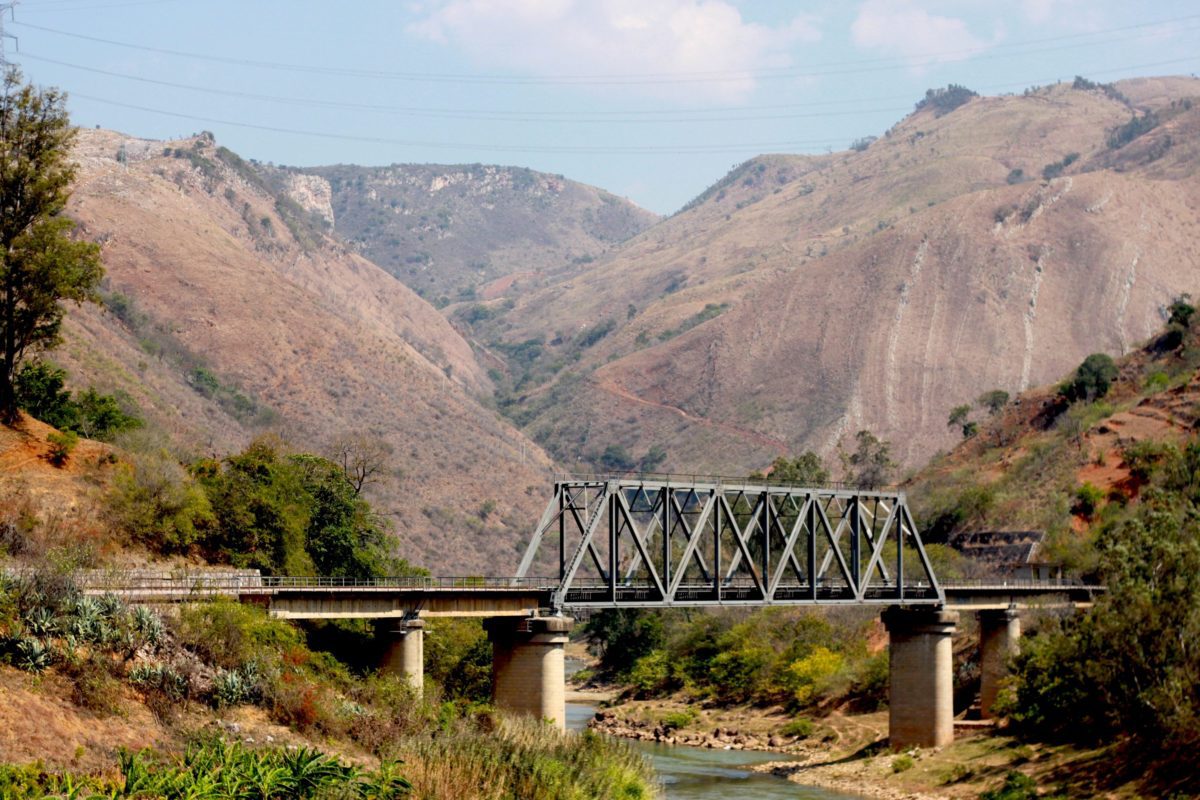
As I finally reach the new Xiaolongtan Bridge, I notice that it has two types of tracks. One, a set of the newer international standard tracks, the other, a set of the Yunnan-Vietnam Railway meter gauge tracks. Kneeling down to examine the tracks, I glance towards the other direction of the tracks which run east into a dark tunnel. The next stop, Datuzhai Train Station (打兔赛站), built by the Chinese during the New Republic, the station sits along the same path as the Yunnan-Vietnam Railway.
I look up ahead at the tracks as they slowly disappear into the sunset’s rays indicating it might be getting close to dinner. Though there won’t be any train to hop onto today, the old, reliable Yunnan-Vietnam Railroad tracks can still guide me back.
Cover Image: Huyan Hong
Photography by Anson Zong-Liscum


